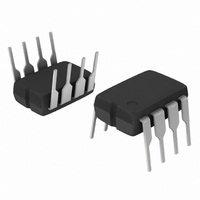NCP1203P60G ON Semiconductor, NCP1203P60G Datasheet - Page 11

NCP1203P60G
Manufacturer Part Number
NCP1203P60G
Description
IC CTRLR PWM CM UVLO HV 8DIP
Manufacturer
ON Semiconductor
Datasheet
1.NCP1203P100G.pdf
(15 pages)
Specifications of NCP1203P60G
Output Isolation
Isolated
Frequency Range
57 ~ 73kHz
Voltage - Input
8.4 ~ 16 V
Voltage - Output
500V
Operating Temperature
-40°C ~ 150°C
Package / Case
8-DIP (0.300", 7.62mm)
Number Of Outputs
1
Duty Cycle (max)
80 % (Typ)
Output Current
250 mA
Mounting Style
Through Hole
Switching Frequency
65 KHz (Typ)
Operating Supply Voltage
16 V
Maximum Operating Temperature
125 C
Fall Time
28 ns
Minimum Operating Temperature
- 40 C
Rise Time
67 ns
Synchronous Pin
No
Topology
Flyback
Lead Free Status / RoHS Status
Lead free / RoHS Compliant
Other names
NCP1203P60GOS
Available stocks
Company
Part Number
Manufacturer
Quantity
Price
Company:
Part Number:
NCP1203P60G
Manufacturer:
ON Semiconductor
Quantity:
8 500
Part Number:
NCP1203P60G
Manufacturer:
ON/安森美
Quantity:
20 000
Full Latching Shutdown
when an abnormal situation is detected (overtemperature or
overvoltage). This feature can easily be implemented
through two external transistors wired as a discrete SCR.
current flowing through Rhold should be small enough to let
the V
is fired. The NPN base can also receive a signal from a
temperature sensor. Typical bipolars can be MMBT2222
and MMBT2907 for the discrete latch. The MMBT3946
features two bipolars NPN+PNP in the same package and
could also be used.
Protecting the Controller Against Negative Spikes
is the designer’s duty to avoid the presence of negative
spikes on sensitive pins. Negative signals have the bad habit
to forward bias the controller substrate and induce erratic
behaviors. Sometimes, the injection can be so strong that
internal parasitic SCRs are triggered, engendering
irremediable damages to the IC if they are a low impedance
path is offered between V
Other applications require a full latching shutdown, e.g.
Rhold ensures that the SCR stays on when fired. The bias
As with any controller built upon a CMOS technology, it
CC
ramp up (12.8 V) and down (4.9 V) when the SCR
0.1 mF
Figure 20. Two Bipolars Ensure a Total Latch- -Off of the SMPS in Presence of an OVP
Figure 19. Another Way of Shutting Down the IC without a Definitive Latch- -Off State
OVP
CC
and GND. If the current sense
10 k
ON/OFF
10 k
http://onsemi.com
11
When the V
the NPN biases the PNP and fires the equivalent SCR,
permanently bringing down the FB pin. The switching
pulses are disabled until the user unplugs the power supply.
pin is often the seat of such spurious signals, the
high- -voltage pin can also be the source of problems in
certain circumstances. During the turn- -off sequence, e.g.
when the user un- -plugs the power supply, the controller is
still fed by its V
MOSFET ON and OFF with a peak current limited by
Rsense. Unfortunately, if the quality coefficient Q of the
resonating network formed by Lp and Cbulk is low (e.g. the
MOSFET Rdson + Rsense are small), conditions are met to
make the circuit resonate and thus negatively bias the
controller. Since we are talking about ms pulses, the amount
of injected charge (Q = I x t) immediately latches the
controller which brutally discharges its V
V
damages the controller. Figure 21 depicts a typical negative
shot occurring on the HV pin where the brutal V
testifies for latchup.
CC
capacitor is of sufficient value, its stored energy
Q1
1
2
3
4
CC
NCP1203
Rhold
12 k
level exceeds the zener breakdown voltage,
CC
1
2
3
4
capacitor and keeps activating the
8
7
6
5
CV
8
7
6
5
CC
CC
LAux
capacitor. If this
CC
discharge






